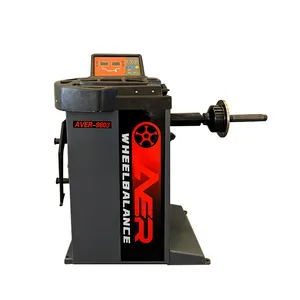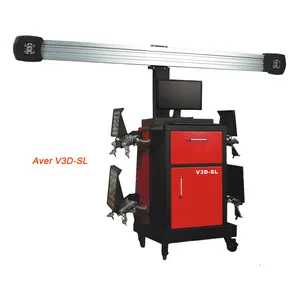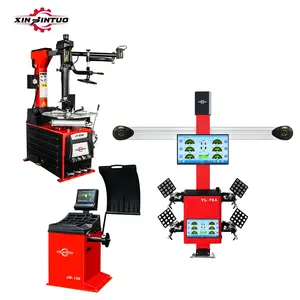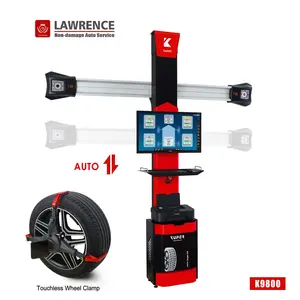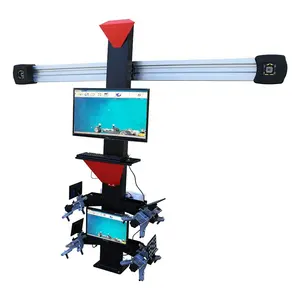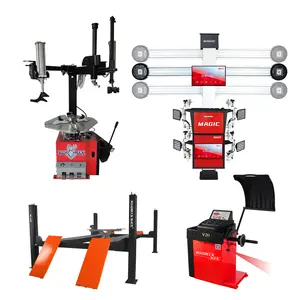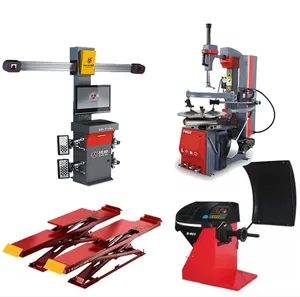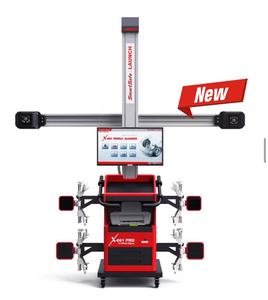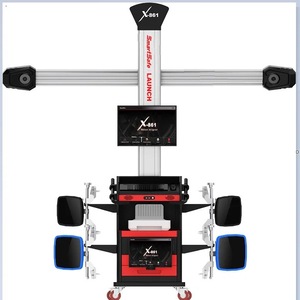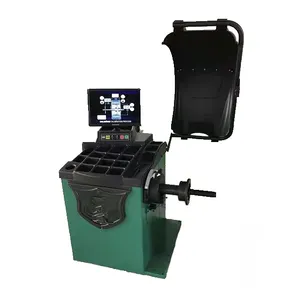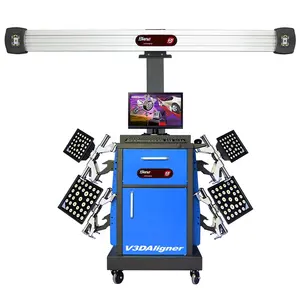Manual Wheel Alignment Tools Producer












 0
0







 1/26
1/26













 1/36
1/36




 0
0






 1/14
1/14




 1/3
1/3





 1/3
1/3






 1/18
1/18



 0
0




 1/3
1/3












 1/15
1/15



 0
0







 1/17
1/17








 1/3
1/3





About manual wheel alignment tools producer
Where to Find Manual Wheel Alignment Tools Producers?
China remains the central hub for manufacturing manual wheel alignment tools, with key production clusters located in Zhejiang, Shandong, and Liaoning provinces. These regions host vertically integrated facilities capable of full-cycle production—from CNC machining and structural welding to software integration and final calibration. Wenzhou in Zhejiang and Yantai in Shandong have emerged as dominant industrial zones, combining mature supply chains for optical sensors, precision arms, and clamping fixtures with access to skilled technical labor.
Suppliers in these hubs operate dedicated production lines for manual 3D alignment systems, supporting both standard configurations and custom engineering. The proximity of component manufacturers reduces lead times by 20–30% compared to offshore alternatives. Buyers benefit from localized ecosystems where raw material sourcing, surface treatment (powder coating, anodizing), and quality testing occur within tightly managed geographic networks—enabling faster prototyping and scalable order fulfillment. Typical production cycles range from 15 to 30 days for batch orders, with many suppliers offering modular designs compatible with lift integration.
How to Choose Manual Wheel Alignment Tools Producers?
Effective supplier selection requires rigorous evaluation across three core dimensions:
Technical Compliance & Certification
Verify adherence to international standards such as CE marking for European market access and ISO 9001 for quality management. While not all suppliers explicitly list certifications in product data, consistent compliance is evident in design features like calibrated sensor arrays, stable mounting frames, and traceable measurement algorithms. Prioritize producers providing test reports or validation documentation for angular accuracy (typically ±0.02°) and system repeatability.
Production Capacity and Customization Capability
Assess operational scale through measurable indicators:
- Minimum factory footprint exceeding 3,000m² for sustained output
- In-house R&D teams enabling software customization (UI language, vehicle database compatibility)
- CNC machining, laser cutting, and powder coating capabilities on-site
Cross-reference online revenue metrics (e.g., >US $500,000 annual digital sales) and reorder rates (>15%) as proxies for market acceptance and production stability.
Transaction Security and Support Infrastructure
Favor suppliers with documented response times ≤2 hours and 100% on-time delivery records. Evaluate after-sales support depth, including remote diagnostics, multilingual manuals, and spare parts availability. Confirm packaging specifications (wooden crates, shock indicators) for international shipping integrity. For high-value procurement, utilize third-party inspection services pre-shipment to validate functionality against agreed technical parameters.
What Are the Leading Manual Wheel Alignment Tools Producers?
| Company Name | Location | Online Revenue | On-Time Delivery | Avg. Response | Reorder Rate | Customization Options | Min. Order Quantity | Price Range (USD) |
|---|---|---|---|---|---|---|---|---|
| Yantai Jintuo Automobile Technology Co., Ltd. | Shandong, CN | US $1,400,000+ | 100% | ≤2h | 23% | Software, logo, material, size, packaging | 1 piece/set | $700–$5,600 |
| Yantai Lide Automotive Equipment Manufacturing Co., Ltd. | Shandong, CN | US $500,000+ | 100% | ≤1h | 17% | Limited (configurations, branding) | 1–10 sets | $410–$9,858 |
| WENZHOU CHENT AUTOMOTIVE TECHNOLOGY CO.,LTD. | Zhejiang, CN | US $160,000+ | 100% | ≤6h | 18% | Color, logo, packaging, graphic | 1 acre* | $499–$4,000 |
| Yingkou Aver Technology Industry Co., Ltd. | Liaoning, CN | US $70,000+ | 86% | ≤6h | <15% | Size, lift compatibility, branding | 1 set | $289–$2,327 |
*Note: “1 acre” listed as MOQ appears to be a data anomaly or placeholder; typical MOQs for alignment equipment are per unit or set.
Performance Analysis
Yantai Jintuo stands out with the highest reported online revenue and strongest reorder rate (23%), indicating robust customer retention and scalable operations. Its broad customization scope—including software interface and vehicle compatibility adjustments—positions it favorably for integrators and private-label buyers. Yantai Lide demonstrates rapid responsiveness (≤1h) and extensive product bundling (spray booths, lifts, tire changers), suggesting strong aftermarket integration capabilities. Wenzhou Chent offers competitive pricing on entry-level models but lists an anomalous MOQ that may require clarification. Yingkou Aver provides cost-effective solutions but lags in delivery reliability (86%) and repeat business, signaling potential gaps in post-sale support or consistency.
FAQs
How to verify manual wheel alignment tool producer reliability?
Request copies of valid CE or ISO 9001 certificates and confirm their authenticity via issuing body databases. Conduct virtual audits of production floors to assess CNC equipment usage, assembly line organization, and QC checkpoints. Analyze transaction history for consistent delivery performance and review customer feedback focused on measurement accuracy and software usability.
What is the typical sampling timeline for manual alignment systems?
Standard sample units are typically produced within 10–20 days. Systems requiring software localization or mechanical modifications may take 25–35 days. Air freight shipping adds 5–10 days depending on destination region.
Can these suppliers handle global exports?
Yes, leading producers routinely export to North America, Europe, Southeast Asia, and the Middle East. Most offer FOB terms with coordination for CIF arrangements upon request. Ensure compliance with local electrical safety and electromagnetic interference regulations if the system includes powered components.
Do manufacturers provide free samples?
Free samples are uncommon due to high unit value. Suppliers often require payment for initial units but may credit the cost toward future bulk orders (e.g., minimum 3–5 units). Sample fees typically cover 40–60% of total production cost.
How to initiate customization requests?
Submit detailed technical requirements including vehicle types (passenger, truck, bus), compatibility with lift models, preferred software language, display configuration (single/dual monitor), and branding elements. Reputable suppliers respond with engineering drawings or 3D renderings within 72 hours and deliver functional prototypes within 4 weeks.















